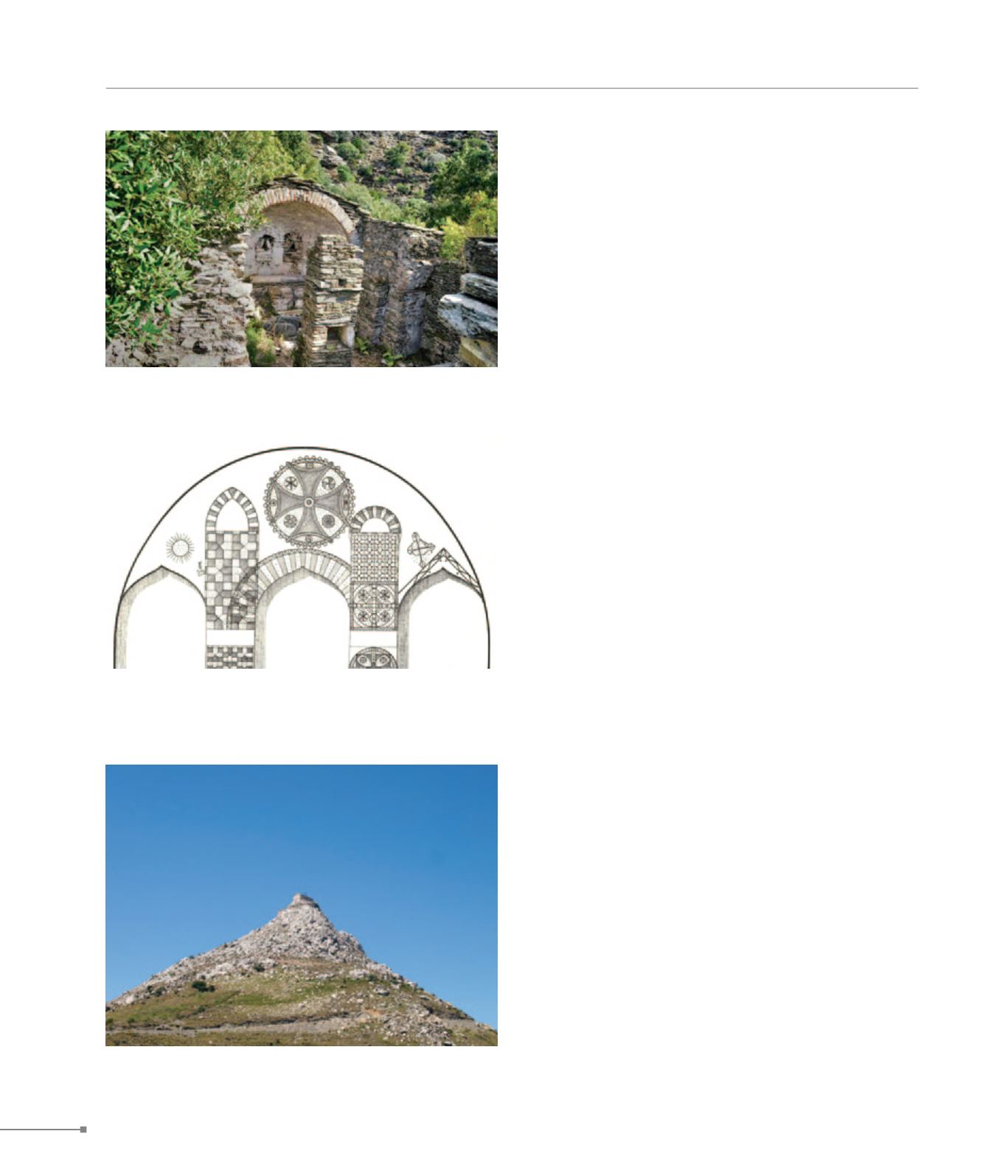
Icaria
Icaria
THE ISLANDS
344
574. Icaria
Aghios Kerykos. (1)
The small Kapsalino Kastro, a fortress now in ruins, was built
of local stone in the typical domestic masonry. The site was
probably a watchtower in earlier times. It seems it was part of
the early medieval network of castles and watchtowers (vigles)
that had been organised on the island of Icaria after the Byz-
antines regained domination of the Aegean and established
the themes.
Exo Pharos. (2)
At the site of Monastiria, between Kerames and Pharos, on
the slope of the hill are scattered structural ruins and sherds
of utilitarian vessels from the Early and Mid-Byzantine years.
Many of the ruined buildings survive at a good height. The
E wall of a church with the bema apse, a cistern and a small
cave naiskos are preserved, among others. The name Monas-
tiria (monasteries) refers to a monastic complex. The site is
mentioned with the name “Kome Treis Hierarchai” (Town of
Three Hierarchs) in a document of the Patmos monastery dat-
ing from 1680.
Mileopos or Miliopos. (3)
The Miliopos fortress was built on a hill above the modern
village of Miliopos. Parts of defensive walls and of towers,
the entrance gate and the Evangelismos church are still pre-
served. The Post-Byzantine church of Aghios Kerykos stands
outside the enclosure, at the beginning of the ascent to the
fortress. Above Miliopos village is a ruined Mid-Byzantine
church dedicated to the Taxiarch. The church features relief
architectural elements of excellent quality (perforated panels,
mullions, capitals) from the Early Christian years presuppos-
ing the existence of a basilica of that period at the same site or
within a short distance.
Kambos, Οenoe. (4)
At Kambos (previously ancient Oenoe), almost in the centre of
the village, are the foundations of a three-aisled, Early Chris-
tian basilica. Parts of its mosaic floor and sculpted architec-
tural elements are preserved. The nave is now occupied by
Aghia Irene, a domed, cross-in-square church maintaining ar-
chaic elements such as the synthronon in the conch. It dates
from the 10th-11th c. Byzantine structures called “palatia” are
found at the archaeological site of ancient Oenoe.
Akamatra. (5)
Saint Paul’s is a single-nave church located in Akamatra. It
features aniconic decoration dated to 1103-4 according to an
inscription.
Kossoikia. (6)
On the Prioni ridge, E of and above the village of Kossoikia,
stands the medieval fortress of Koskinas, also called the for-
tress of Nikaria. A large part of the defensive walls, the en-
trance gate and the Post-Byzantine church dedicated to Saint
574. Ikaria, Koskinas fortress (Ικαρία, κάστρο του Κοσκινά)
574. Ikaria, Saint Paul at Akamatra (Ικαρία, Άγιος Παύλος στην
Aκαμάτρα, τοιχογραφία)
574. Ikaria, Taxiarch at Miliopos (Ικαρία, Ταξιάρχης στον Μηλιωπό)


